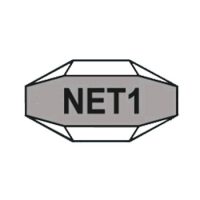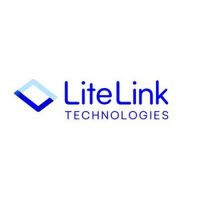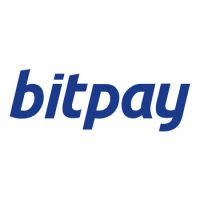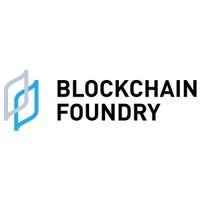Blockchain Press Releases
The Electrifying Divide in Battery Chemistries for Construction EVs

BOSTON, July 6, 2023 /PRNewswire/ — The success of electric vehicles in the construction industry will largely be determined by battery prices being low enough that the total cost of ownership is cheaper than diesel alternatives. IDTechEx’s new report, “Electric Vehicles in Construction 2023-2043“, shows that there is a battery price tipping point, under which it will be cheaper over the vehicle lifetime to operate an EV. Selecting the right chemistry then will be imperative for getting a low enough vehicle price. So why is a clear dichotomy seen between the batteries being deployed in China compared to Europe?
Electric vehicles in construction are an emerging market. Despite this, IDTechEx has built a database of more than 100 example makes and models across seven different construction vehicle categories. However, with lots of vehicles still yet to be released, only 49 database entries have confirmed chemistry information. With Europe and China being more established markets for electric construction vehicles, conclusions about battery chemistry trends from OEMs in these regions can be made. What is obvious at this early stage is that Europe heavily favors NMC, while China has chosen LFP.
Battery Requirements in Construction Vehicles
So why would one select NMC, LFP, or even lead acid, for that matter? Electrifying construction equipment is a fascinating and nuanced topic. The priorities for a battery are huge capacities at low costs. With some of these machines being gargantuan, and usually requiring concrete counterbalances to handle the massive loads they encounter, battery weight isn’t so much of an issue. Power density is also not much of a priority. Unlike electric cars, construction vehicles do not tend to have large spikes in power demand and are more likely to operate at a steady rate for a long time. As an example, the Tesla Model S has a ~60kWh battery and ~210kW motor power, meaning its battery must be able to deliver a peak of 3.5C (power divided by capacity). This is a typical requirement of road cars; hence, they tend to favor power-dense chemistries like NMC. By contrast, the Volvo L25 electric (an electric compact loader) has a battery capacity of 40kWh and a maximum motor power of 36kW, so the battery is only required to discharge at a maximum of 0.9C, well below road car expectations.
The same is true when you move to the really big stuff. The XCMG XE270E is a 27-tonne excavator leviathan with a battery capacity of 525kWh, but its motor is a measly 140kW (~0.27C). In fact, research in IDTechEx’s report, “Electric Vehicles in Construction 2023-2043“, shows that the vast majority of electric construction vehicles have a peak discharge requirement of less than 1C, with one quarter of vehicles requiring less than 0.25C peak discharge.
A low peak discharge requirement can be fulfilled by lead acid batteries, which is likely why it had a brief moment in the sun in the early days of construction electrification. The European examples that used lead acid were mainly from the mid-2010s, at which point lithium-ion technologies were still scaling and were much more expensive than lead acid. However, these vehicles were seriously limited, with low endurance and slow recharge times, making their use a challenge. Lead acid was quickly replaced with lithium-ion as it became more financially viable.
Both NMC and LFP offer the required performance for construction, happily coping with the peak discharging requirements and having high enough volumetric and gravimetric densities to fit in the machines. Speaking broadly, NMC tends to be a higher-performance battery than LFP, with better energy and power densities but coming at a premium. It would make sense then for the industry to select LFP. It offers all the needed performance while helping minimize the premium of building an electric vehicle, the number one priority for electric construction vehicles. Why, then, does the European market mostly use NMC?
Why is NMC dominant in Europe and LFP in China?
The best explanation is that it has been a case of availability. Most of the electric construction development so far has used battery pack suppliers, such as Northvolt, Forsee and Volta, and most of their products use NMC. IDTechEx’s research finds that over 75% of the offerings from European and North American pack manufacturers use NMC. These companies have been supplying a range of industries, including heavy-duty road vehicles like buses and trucks. These vehicles will have quite high peak power to deal with acceleration events, hills, etc. and will likely suit NMC better. IDTechEx speculates that this is why Europe has been mostly choosing NMC so far, but with battery pricing being a key factor in the success of electric construction vehicles, it is likely that there will be increased LFP uptake in the future.
Meanwhile, in China, LFP is already the dominant chemistry choice. China already has a good supply of LFP solution. This has risen as its vehicle fleet has rapidly been electrified, and it needed a cheap solution that could provide acceptable energy density (vehicle range) and keep the vehicle affordable. By contrast, European and North American electric vehicle markets have focussed on maximizing vehicle range, normally opting for the more expensive NMC and anticipating consumers will be more comfortable with the additional cost. This is good news for China’s electric construction industry, which has been able to build very large batteries relatively quickly and deploy some huge machines, such as the XCMG example already mentioned.
Unfortunately, there is not much data concerning which North American or APAC-based OEMs favor battery chemistries. This is mostly because OEMs in this region are only just beginning their electrification journeys. North America is a prime example; giants of the industry CAT and John Deere have made a recent push with electric construction vehicles showcased at BAUMA 2022, CES 2023, and CONEXPO 2023. However, these are still some years away from production, and battery chemistries are yet to be confirmed. However, an educated guess would suggest that CAT will likely use NMC for similar reasons to Europe.
Sodium ion, a Future Candidate?
Another possible contender for the construction industry is sodium-ion. This is an emerging chemistry and does not have an established market yet. The key thing to know is that sodium-based solutions can be produced at lower costs than lithium ones, but they will not have the same performance. In this respect, they share the qualities of LFP. The issue is that they are not yet a scaled solution, so they are more expensive than both LFP and NMC while having worse performance. Sodium, therefore, does not make sense in the construction industry for the time being. However, when scaled and delivering the promised price reduction, it could be a prime match for the needs of this nuanced market.
The electric construction industry is still nascent, with few vehicles in series production. However, if recent activity and announcements are to be believed, then the number of machines available in the next few years is going to explode. In IDTechEx’s report, “Electric Vehicles in Construction 2023-2043“, a 10-year CAGR of 37% is forecasted, with the electric construction machine industry growing to a value of US$150 billion in 2043. All of this growth is going to give rise to a significant battery demand, and whether it be NMC, LFP, or perhaps even Na-ion, the evolution of this industry is going to be electrifying.
IDTechEx Mobility Research
IDTechEx is actively researching autonomy and electrification and has just released a new report, “Electric Vehicles in Construction 2023-2043”. Find out more about this report, including downloadable sample pages, at www.IDTechEx.com/EVConstruction.
This research forms part of the broader mobility research portfolio from IDTechEx, who track the adoption of autonomy, electric vehicles, automotive semiconductors, battery trends, and demand across land, sea and air, helping you navigate whatever may be ahead. Find out more at www.IDTechEx.com/Research/EV.
About IDTechEx
IDTechEx guides your strategic business decisions through its Research, Subscription and Consultancy products, helping you profit from emerging technologies. For more information, contact [email protected] or visit www.IDTechEx.com.
Images download:
https://www.dropbox.com/scl/fo/muum7x2ll4n7fwwrih7mr/h?dl=0&rlkey=nnooghio882zw9sdy81iqfjqx
Media Contact:
Lucy Rogers
Sales and Marketing Administrator
[email protected]
+44(0)1223 812300
Social Media Links:
Twitter: www.twitter.com/IDTechEx
LinkedIn: www.linkedin.com/company/IDTechEx
Photo – https://mma.prnewswire.com/media/2147119/IDTechEX.jpg
Logo – https://mma.prnewswire.com/media/478371/IDTechEx_Logo.jpg
![]() View original content:https://www.prnewswire.co.uk/news-releases/the-electrifying-divide-in-battery-chemistries-for-construction-evs-301870208.html
View original content:https://www.prnewswire.co.uk/news-releases/the-electrifying-divide-in-battery-chemistries-for-construction-evs-301870208.html

Blockchain Press Releases
MEXC Announces Einstein (EIN) Listing in July, 50 Million EIN Rewards Event Launches Now

VICTORIA, Seychelles, May 16, 2025 /PRNewswire/ — MEXC, a leading global cryptocurrency exchange, has announced that it will list Einstein (EIN) on July 20, 2025 (UTC). Ahead of the listing, MEXC will launch two exclusive events this May with a total reward pool of 50,000,000 EIN, offering users the opportunity to discover promising projects and earn attractive rewards.
Einstein is an innovative social experiment combining scientific knowledge with the Web3 ecosystem. The project invites participants to explore the intersection of cryptocurrency, blockchain, decentralized science (DeSci), cosmology, and physics. By fostering a spirit of intellectual curiosity and discovery, Einstein aims to reveal the potential synergies between scientific inquiry and blockchain technology.
The EIN token serves as the governance and fee token within the Einstein Protocol. It is utilized for synthesizing, upgrading, downgrading, and decomposing element tokens. All protocol fees are burned, giving EIN a deflationary utility.
MEXC will launch two exclusive events from May 18, 10:00 to July 17, 10:00 (UTC), with the following key details:
Event 1: Einstein (EIN) Launchpool – Stake USDT & MX to Share 42,500,000 EIN
Users can stake USDT or MX tokens via MEXC Launchpool to earn EIN tokens. The staking mechanism is straightforward: the more users stake, the more they earn. In addition, users who stake MX tokens will also qualify for parallel participation in Kickstarter airdrop events, allowing users to earn double rewards.
Event 2: Invite New Users & Share 7,500,000 EIN
Users can earn 400 EIN for each friend who registers using their referral code, deposits a minimum of 100 USDT, and joins the Launchpool event. Each user can invite up to 20 new users for a maximum reward of 8,000 EIN. Rewards will be distributed on a first-come, first-served basis.
MEXC has established itself as an industry leader by consistently providing users with early access to promising projects. According to the latest TokenInsight report, MEXC led the industry with an impressive 461 spot listings. During each bi-weekly period, MEXC maintained a high listing frequency, consistently ranking among the top six exchanges and demonstrating its ability to capture market trends quickly. To date, the exchange has listed more than 3,000 digital assets. MEXC will continue to maintain its industry-leading listing efficiency, innovate, and expand its offerings, ensuring users have access to the best opportunities in the ever-evolving crypto landscape.
For full event details and participation rules, please visit here.
About MEXC
Founded in 2018, MEXC is committed to being “Your Easiest Way to Crypto.” Serving over 40 million users across 170+ countries, MEXC is known for its broad selection of trending tokens, everyday airdrop opportunities, and low trading fees. Our user-friendly platform is designed to support both new traders and experienced investors, offering secure and efficient access to digital assets. MEXC prioritizes simplicity and innovation, making crypto trading more accessible and rewarding.
MEXC Official Website| X | Telegram |How to Sign Up on MEXC
Risk Disclaimer:
The information provided in this article regarding cryptocurrencies does not constitute investment advice. Given the highly volatile nature of the cryptocurrency market, investors are encouraged to carefully assess market fluctuations, the fundamentals of projects, and potential financial risks before making any trading decisions.

Photo – https://mma.prnewswire.com/media/2688251/1920×1080.jpg
Logo – https://mma.prnewswire.com/media/2668118/MEXC_new_Logo.jpg
![]() View original content:https://www.prnewswire.co.uk/news-releases/mexc-announces-einstein-ein-listing-in-july-50-million-ein-rewards-event-launches-now-302456454.html
View original content:https://www.prnewswire.co.uk/news-releases/mexc-announces-einstein-ein-listing-in-july-50-million-ein-rewards-event-launches-now-302456454.html

Blockchain
Blocks & Headlines: Today in Blockchain – May 15, 2025 (BTC’s Push, Pi Network Fund, Stablecoin Levers, JPM Pilot, OKX × Man City)
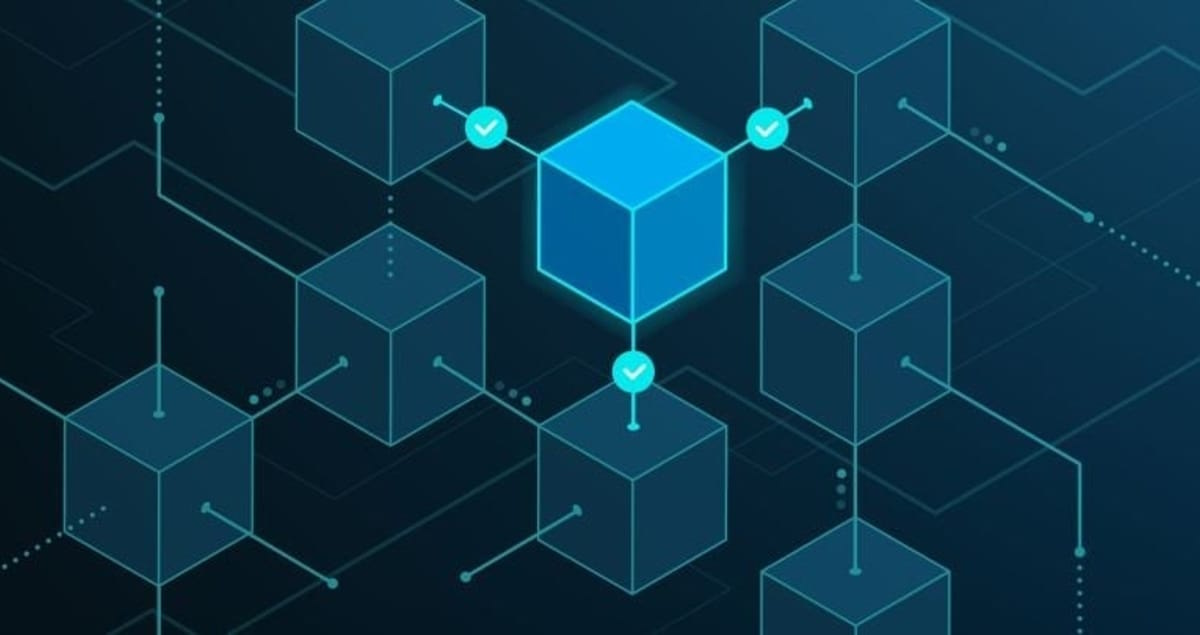
Every trading day, Blocks & Headlines decodes the most significant moves in blockchain technology and cryptocurrency, blending market updates, strategic analysis, and thought—so you can stay ahead in Web3’s fast-moving world. Today’s briefing zeroes in on five game-changing developments:
-
BTC’s $58 Million Raise for ETH Purchases – Bitcoin miners diversify treasury strategies.
-
Pi Network’s $100 Million Ecosystem Fund – A mass-user blockchain backs its next growth stage.
-
Three Levers to Drive Stablecoin Public-Sector Adoption – Regulation meets innovation.
-
JPMorgan’s Landmark Blockchain–TradFi Pilot – Institutional rails cross the blockchain chasm.
-
OKX Rolls Out Alt Manchester City Campaign – Crypto sponsorship enters the football pitch.
Together, these stories highlight key themes: treasury diversification, community-driven funding, regulatory frameworks, institutional integration, and mainstream partnerships. Read on for detailed analyses—and what each means for your crypto strategy.
Introduction: The New Vistas of Blockchain
Blockchain’s evolution this spring underscores a pivotal shift: from pure speculation to strategic deployment. Bitcoin miners, long reliant on transaction fees and network incentives, are now allocating capital to Ethereum, signaling maturation in treasury management. Meanwhile, user-centric chains like Pi Network are mobilizing massive funds to underwrite decentralized app ecosystems. Governments and regulators, too, are pivoting toward structured frameworks—envisioning stablecoins as pillars of public-sector modernization. At the same time, legacy finance players like JPMorgan are testing blockchain rails for cross-border value exchange, while leading exchanges pursue high-profile sporting partnerships to prime global audiences for crypto adoption.
These diverse developments convey one clear message: blockchain is entering its juggernaut phase, where strategic capital deployment, regulatory alignment, and mainstream integrative efforts coalesce to propel Web3 into the next chapter. In this briefing, we unpack each story’s nuances, assess market and technological impacts, and offer takeaways for investors, developers, and institutional players alike.
1. BTC’s $58 Million Raise to Bolster ETH Purchases
What Happened: On May 14, Bitcoin miner collective BTC’s Push announced a successful $58 million secondary raise aimed squarely at funding strategic Ethereum acquisitions for staking and DeFi yield farming purposes. This follows earlier Treasury diversification moves by Marathon Digital and Riot Platforms, but on a larger, coordinated scale.
Source: The Block
The Mechanics of the Raise
-
Participants & Structure: The round drew in leading crypto funds—Multicoin, Paradigm, and Pantera—via convertible note instruments, offering 8% interest and a conversion price tied to a 10% discount on ETH’s 30-day volume-weighted average price.
-
Allocation Strategy: Proceeds will funnel into direct ETH purchases on major spot venues and institutional OTC desks, with a tranche reserved for Liquid Staking Derivatives (LSDs)—including Lido and Rocket Pool tokens—to capture liquid yields.
-
Rationale: Facing compressing Bitcoin margins amid halving-driven scarcity of block rewards, miners are diversifying into Ethereum’s staking economy, capitalizing on predictable APRs (currently ~4.5%) and burgeoning DeFi revenue streams.
Market Implications
-
Cross-Chain Treasury Management: BTC miner allocators validating ETH staking signals an era where major protocol economies interweave on the balance sheets of institutional crypto actors.
-
Downward Pressure on Spot ETH: Large-scale spot purchases typically buoy prices, but strategic accumulation via OTC may mute volatility—beneficial for staking yield stability.
-
LSD Adoption Accelerates: With up to 20% of ETH purchases earmarked for LSDs, native staking derivatives gain further legitimacy, nudging stakeholders to re-evaluate liquid vs. locked staking trade-offs.
Opinion & Outlook
This raise epitomizes institutional sophistication in digital-asset portfolio engineering. Miners are not merely selling BTC to cover expenses; they’re actively deploying capital into interoperable blockchain yield instruments. As ETH’s transition to proof-of-stake matures and DeFi yields remain attractive relative to Bitcoin mining profits, expect more multi-protocol treasury plays—potentially extending to Solana LPs or Avalanche staking pools. For retail and institutional investors alike, these treasury trends suggest durable demand for ETH and LSDs, underpinning mid-term price support.
2. Pi Network Launches $100 Million Ecosystem Fund
What Happened: The Pi Network team unveiled a $100 million ecosystem fund dedicated to nurturing dApp developers, infrastructure providers, and NFT artists building within its rapidly scaling mobile-first blockchain.
Source: Cointelegraph
Fund Structure & Goals
-
Capital Allocation:
-
40% to Core Infrastructure: Node incentives, RPC services, indexing tools.
-
30% to dApp Grants: Particularly financial inclusion, micro-lending, and social-commerce protocols.
-
20% to NFT & Creator Programs: Artist residencies, marketplace subsidies.
-
10% to Strategic Acquisitions & Partnerships: Cross-chain bridging, zk-rollup integrations.
-
-
Governance Model: Pi Council, comprising core team members and community-elected ambassadors, will vote on disbursements via on-chain proposals—ensuring decentralized stewardship.
-
Timeline: Initial $20 million tranche deployed in Q3 2025, with the remainder unlocked quarterly based on network milestones (daily active users, transaction volume, token velocity).
Relevance & Potential
-
Mass-User Onboarding: With over 50 million active mobile miners, Pi Network boasts one of the largest captive user bases. Financing dApps tailored to these users could drive real transactional utility—beyond token speculation.
-
Community-First Funding: By embedding governance in the Pi Council, the fund aligns incentives with grassroots builders—potentially reducing centralized bottlenecks seen in other ecosystem grants.
-
Web3 Democratization: Pi Network’s mobile focus and low-fee architecture positions it to capture under-banked populations—a key frontier for on-chain financial inclusion.
Opinion & Outlook
The $100 million fund is a bold statement: Pi Network is shifting from token distribution hype to ecosystem activation. Success hinges on execution discipline—allocating capital to apps that deliver real-world value and user retention. Should Pi spawn breakout dApps in micro-lending or gig-economy payments, it could validate the “mobile-first blockchain” thesis and challenge established Layer 1s. Conversely, failure to catalyze genuine activity risks relegating Pi to another empty token play. Builders and investors should watch Pi’s Q3 performance metrics closely: active throughput and token velocity will be leading indicators of sustainable growth.
3. Blockchain Regulation & the Public Sector: Three Levers to Drive Stablecoins
What Happened: In a detailed analysis for Funds Society, blockchain policy experts identified three critical levers governments can deploy to accelerate stablecoin adoption in public-sector use cases: 1) Regulatory clarity via bespoke stablecoin frameworks, 2) Central bank digital currency (CBDC) interoperability mandates, and 3) Fiscal stimulus pilot programs.
Source: Funds Society
The Three Levers Explained
-
Bespoke Stablecoin Regulation:
-
Crafting targeted laws—distinct from securities or money-transmission statutes—can streamline issuer licensing, reserve requirements, and custody standards.
-
-
CBDC Interoperability Mandates:
-
Mandating APIs that allow stablecoins to seamlessly transact with emerging CBDCs (e.g., the e-Euro) prevents fragmentation and spurs innovation.
-
-
Stimulus & Grant Pilots:
-
Direct funding of social benefits via approved stablecoins (e.g., for disaster relief or tax rebates) bootstrap user familiarity and network liquidity.
-
Broader Implications
-
Public-Private Collaboration: Co-designing frameworks with established issuers (Circle, Paxos) and DeFi protocols (MakerDAO) ensures regulations accommodate on-chain composability.
-
Financial Inclusion: Well-regulated stablecoins can deliver faster, cheaper payouts to under-served communities—particularly across EU-Africa corridors.
-
Monetary Stability: Clear guidelines on reserve management and auditing bolster confidence, reducing redemption risk and contagion from issuer failures.
Opinion & Outlook
Stablecoins are the on-ramp to blockchain-based public finance. Yet, regulatory ambiguity has constrained adoption to niche corporate pilots. By wielding these three levers, policymakers can foster a harmonized, innovation-friendly environment—balancing risk mitigation with pace. For blockchain firms, engaging early in consultations and sandbox programs is vital. And investors should track jurisdictions piloting stablecoin grants—these will likely become blueprints for global standard-setting.
4. JPMorgan Bridges Blockchain and TradFi in Landmark Pilot
What Happened: JPMorgan executed its first public blockchain pilot facilitating an institutional cross-border payment between its New York and London operations, using Quorum-based channels and a tokenized USD settlement layer.
Source: CryptoSlate
Pilot Details
-
Settlement Tokens: JPM Coin (ERC-20), temporarily bridged via a permissioned Ethereum sidechain.
-
Transaction Flow:
-
NY branch issues JPM Coin to London counterparty.
-
Smart contract escrow holds tokens until KYC/AML checks complete.
-
Tokens redeemed and fiat disbursed in local currencies.
-
-
Performance Metrics: Settlement finality in <2 minutes (vs. 3–5 business days for SWIFT), throughput of 1,000 txs/sec, and integrated compliance reporting.
-
Next Steps: Scaling to 10+ global corridors, public-private partnerships with central banks exploring wholesale CBDC pilots.
Significance
-
TradFi Embrace of Permissioned Chains: A tacit acknowledgment that blockchain can enhance—not replace—existing rails, offering efficiency gains while preserving compliance controls.
-
Tokenized Fiat’s Viability: Demonstrates tokenization is not academic—banks can leverage stable, permissioned tokens to slash operational costs and risks.
-
CBDC Synergies: Success of JPM Coin pilots lays groundwork for eventual CBDC–stablecoin interoperability and reduces friction in wholesale liquidity management.
Opinion & Outlook
JPMorgan’s pilot is more than a proof-point; it’s a template for global banks to integrate blockchain pockets within legacy infrastructure, extracting value without wholesale disruption. Traditional financial institutions should monitor results closely—particularly the compliance integration and counterparty risk profiles. Meanwhile, DeFi advocates must acknowledge that permissioned blockchains will coexist with public networks, forming a hybrid financial ecosystem. As central banks advance CBDC initiatives, banks already comfortable with tokenized settlement gain a critical head start.
5. OKX Launches Alt Manchester City Campaign
What Happened: Leading crypto exchange OKX unveiled a multi-year sponsorship campaign with Manchester City FC, launching in-stadium NFT activations, fan token incentives, and Web3 watch parties across global OKX lounges.
Source: PR Newswire
Campaign Highlights
-
Fan Token Airdrops: Exclusive MCFC NFTs drop via OKX app at key Premier League matches.
-
Stadium Engagement: AR experiences—scan stadium QR codes to unlock private token presales and digital memorabilia.
-
Global OKX Lounges: Co-hosted events in Dubai, Singapore, and New York, featuring live match streaming with crypto-themed commentary.
-
Charity Tie-In: A portion of secondary NFT sales funds City in the Community foundation projects.
Market & Cultural Impact
-
Mainstream Awareness: Tapping Premier League’s 1 billion+ fanbase amplifies crypto legitimacy beyond niche circles.
-
Fan Token Renaissance: After token hype waned in 2022, OKX’s integrated approach—blending NFTs and real-world utility—may reignite engagement.
-
Regional Growth: Local activations in Asia and Middle East signal OKX’s strategic focus on fast-growing crypto markets hungry for experiential marketing.
Opinion & Outlook
OKX’s Manchester City partnership exemplifies crypto’s turn toward lifestyle branding, where fan loyalty and digital asset ownership intertwine. Success metrics will extend beyond token trading volumes to user-retention, event attendance, and charitable outcomes. Other exchanges and NFT projects should note the power of hybrid physical–digital activations: real-world events lend tangibility to virtual communities, critical for long-term adoption. As sports franchises increasingly seek blockchain partners, expect a new wave of Web3 stadiums, in which every seat becomes a node in a global fan network.
Conclusion: Five Takeaways for Blockchain Stakeholders
-
Inter-Protocol Treasury Moves: BTC miners backing ETH demonstrates that savvy actors view blockchains as interlinked asset classes—prompting reevaluation of single-chain investment strategies.
-
Community-Governed Ecosystem Funds: Pi Network’s $100 million push underscores the necessity of decentralized governance and milestone-based funding to catalyze genuine on-chain activity.
-
Regulation as Enabler: Structured stablecoin frameworks, CBDC interoperability, and stimulus grants illustrate how public-sector levers can accelerate blockchain’s maturation and real-world use cases.
-
TradFi Co-Optation of Blockchain: JPMorgan’s pilot shows that traditional banks will increasingly embed permissioned tokens and smart-contract rails into core operations—integration, not replacement, is the watchword.
-
Mainstream Partnerships Fuel Adoption: OKX’s Man City campaign spotlights the power of mixing digital assets with live events to onboard mass audiences and give blockchain a cultural foothold.
As blockchain’s infrastructure deepens—from miner balance sheets and institutional rails to fan experiences and public-sector deployments—stakeholders must adopt a multi-vector lens: blending treasury strategy, regulatory engagement, technological integration, and experiential marketing. Tomorrow’s top headlines will hinge on how well projects and institutions navigate this complex ecosystem—so stay tuned, stay diversified, and keep validating your own node of opportunity in Web3’s grand experiment.
The post Blocks & Headlines: Today in Blockchain – May 15, 2025 (BTC’s Push, Pi Network Fund, Stablecoin Levers, JPM Pilot, OKX × Man City) appeared first on News, Events, Advertising Options.
Blockchain Press Releases
HTX Hot Listings Week 6 May 2025: Top Gainer Up 521% as Bitcoin Breaks $100K Again

SINGAPORE, May 15, 2025 /PRNewswire/ — As Bitcoin surged back above $100,000, the crypto market saw a notable resurgence in trading activity and investor enthusiasm over the past week. On HTX, several trending tokens—spanning Solana Memecoins, Ethereum Memes, AI, and Restaking sectors—recorded sharp gains and significant trading volume from May 6 to May 12. Below are the recently standout tokens based on 7-day performance:
Solana Meme Sector
MOODENG (+521%)
Inspired by the viral pygmy hippopotamus “Moo Deng” in Thailand, this token combined community-driven buzz and the surging popularity of Solana Meme coins to become the week’s most impressive gainer, skyrocketing over fivefold.
For details, please read: What is MOODENG?
GOAT (+164%)
As the First meme coin created by truth_terminal, GOAT is inspired by a notorious internet meme and becomes a symbol of the AI’s capacity for randomness, disruption, and memetic influence. Positioned at the intersection of AI and meme culture, GOAT quickly captured market attention with over $200 million in trading volume just days after its launch.
For details, please read: What is GOAT?
PNUT (+147%)
PNUT pays tribute to Peanut the Squirrel, which was taken away by NYSDEC and euthanised. It blends political satire with meme culture, gaining further attention after Elon Musk reposted related content on X, driving strong community engagement.
For details, please read: What is PNUT?
GRIFFAIN (+78%)
Griffain is a blockchain-based AI platform designed to operate within the Solana ecosystem. The project focuses on creating a robust and scalable DeFi solution that supports seamless token swaps, liquidity provision, and ecosystem growth. It aims to empower users with efficient tools for trading and managing digital assets while maintaining transparency and decentralization as core principles.
For details, please read: What is GRIFFAIN?
Ethereum Meme Sector
NEIRO (+104%)
NEIRO is the Shiba Inu who has gained popularity on social media, similar to Kabosu (DOGE). As a retro-style Ethereum meme token, NEIRO taps into nostalgia with classic meme aesthetics and narrative playbooks. Its rapid rise last week signals renewed interest in vintage meme formats.
For details, please read: What is NEIRO?
PEPE (+80%)
PEPE leverages the cultural significance of the meme, positioning itself in the meme coin market alongside Dogecoin and Shiba Inu. It has no intrinsic utility beyond speculative trading, with its rapid rise fueled by social media, exchange listings, and the overall meme coin trend. The token’s resurgence affirms its solid community foundation and lasting appeal.
For details, please read: What is PEPE?
DEGEN (+161%)
Degen started as a meme token on the BASE chain for rewarding participants in the Farcaster Degen channel but gained quite some attention due to its performance in the secondary market.
For details, please read: What is DEGEN?
AI & Restaking Sectors
KAITO (+113%)
KAITO is the native token and the fundamental building block of the AI-powered InfoFi network. It helps shape the direction of the ecosystem by influencing how attention is allocated across the network.
For details, please read: What is KAITO?
ETHFI (+98%)
ETHFI is the token of Ether.fi, which is a non-custodial liquidity staking protocol that allows stakers to maintain control over their private keys, thereby ensuring the security and autonomy of their assets.
For details, please read: What is ETHFI?
*The above content is not an investment advice and does not constitute any offer or solicitation to offer or recommendation of any investment product.

About HTX
Founded in 2013, HTX has evolved from a virtual asset exchange into a comprehensive ecosystem of blockchain businesses that span digital asset trading, financial derivatives, research, investments, incubation, and other businesses.
As a world-leading gateway to Web3, HTX harbors global capabilities that enable it to provide users with safe and reliable services. Adhering to the growth strategy of “Global Expansion, Thriving Ecosystem, Wealth Effect, Security & Compliance,” HTX is dedicated to providing quality services and values to virtual asset enthusiasts worldwide.
To learn more about HTX, please visit HTX Square or https://www.htx.com/, and follow HTX on X, Telegram, and Discord.

Photo – https://mma.prnewswire.com/media/2688348/image_838145_35850679.jpg
Photo – https://mma.prnewswire.com/media/2688349/1.jpg
Logo – https://mma.prnewswire.com/media/2391903/image_ID__Logo.jpg
![]() View original content:https://www.prnewswire.co.uk/news-releases/htx-hot-listings-week-6-may-2025-top-gainer-up-521-as-bitcoin-breaks-100k-again-302456536.html
View original content:https://www.prnewswire.co.uk/news-releases/htx-hot-listings-week-6-may-2025-top-gainer-up-521-as-bitcoin-breaks-100k-again-302456536.html

-

 Blockchain Press Releases7 days ago
Blockchain Press Releases7 days agoBybit Surpasses 70 Million Users, Reinforces Commitment to Transparency and Institutional Growth
-

 Blockchain4 days ago
Blockchain4 days agoBlocks & Headlines: Today in Blockchain – May 12, 2025 | Rootstock, Zimbabwe Carbon Registry, Fastex, 21Shares, The Blockchain Group
-

 Blockchain Press Releases3 days ago
Blockchain Press Releases3 days agoBullish partners with the Gibraltar Government and GFSC to pioneer world’s first crypto clearing regulation
-

 Blockchain Press Releases4 days ago
Blockchain Press Releases4 days agoBybit Introduces BOB to P2P: Bolivian Traders Can Now Buy, Sell in Local Currency and Earn Commissions
-

 Blockchain Press Releases7 days ago
Blockchain Press Releases7 days agoUnleashing the Power of Futures Combo Bots on Bybit: Leveling up Futures Trading with More Rewards
-

 Blockchain7 days ago
Blockchain7 days agoBlocks & Headlines: Today in Blockchain – May 9, 2025
-

 Blockchain Press Releases3 days ago
Blockchain Press Releases3 days agoIndependent Audit from Hacken Confirms MEXC’s Strong Security Standards
-

 Blockchain Press Releases7 days ago
Blockchain Press Releases7 days agoBybit Unifies Loan Products to Enhance Capital Efficiency for Crypto Traders








